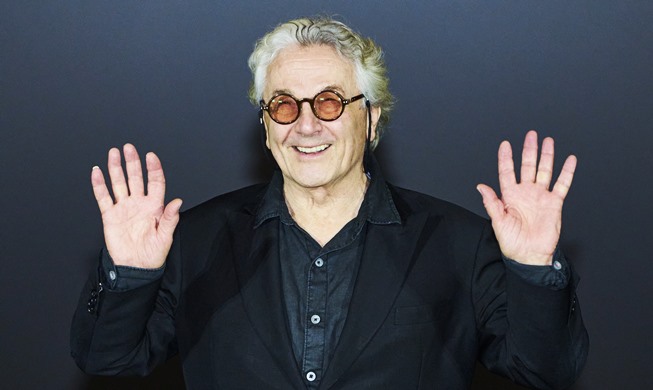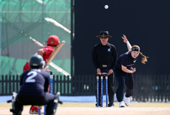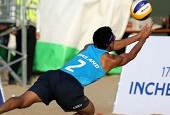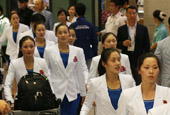-
 Korea.net's 24-hour YouTube channel
Korea.net's 24-hour YouTube channel- NEWS FOCUS
- ABOUT KOREA
- EVENTS
- RESOURCES
- GOVERNMENT
- ABOUT US
Incheon is in a festive mood these days as it hosts the 17th Incheon Asian Games, currently on day four of its 15-day run. A range of sports are making the games even more exciting, as they are non-Olympic events that can only be seen in the Asian Games.
Among them are sepaktakraw, a type of kick volleyball that was developed and is dominated by Malaysia and Thailand. There is also kabaddi, a South Asian mix of tag, dodgeball and Greco-Roman wrestling, and then wushu and karate, two martial arts from China and Japan, respectively.
Those four sports are gaining much attention from the mass media covering the games, as they are considered to reflect the traditions and culture of the originating countries.
Recently, the New York Times reported on sepaktakraw and kabaddi, describing them as "topsy turvy sports" that are played during the Asian Games.
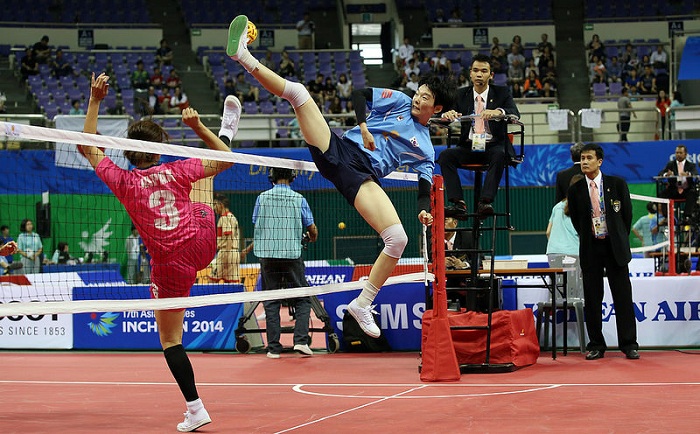
The word for sepaktakraw is a combination of "sepak," a Malaysian word for kick, and "takraw," a Thai word for ball. Therefore, the sport literally means to, "kick the ball." As the name suggests, Malaysia and Thailand are the two biggest rivals in the sport. The basic rules are that players kick a ball onto the opposing side of the net, without letting it touch the ground. Watching the players constantly leap as high as their own height and then perform an overhead kick or a powerful spike with their foot is a jaw-dropping experience.
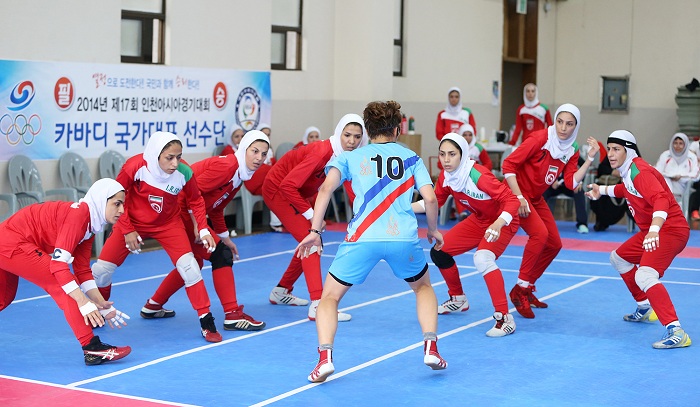
Kabaddi comes from a folk tradition in northern India. The name came from a Hindi word for "holding your breath." In a rectangular court, seven athletes play on each team for 40 minutes for the men and 30 minutes for the women. At first glance, it looks similar to a martial art, or to playing tag. The rules of the game are that an attacker will cross over onto the opponent's side of the court, touch a defender, and then return to their side, scoring one point. A defender who distracts the attacker from going back to their side of the court will also get one point. If attacked, the defender must leave the court.
Players must hold their breath during the attack, while on the other team's side of the court. They must keep calling out, "Kabaddi," so as to prove that they are not breathing. The attacker will be kicked out of the game if caught breathing.
Therefore, breath control is the most important and essential skill in the game. Some top players are capable of yelling out, "Kabaddi," for a number of minutes. The game has increasingly been popular among South Asian and Middle Eastern countries, such as India, Pakistan and Iran, in particular, and a professional league was created earlier this year in India.
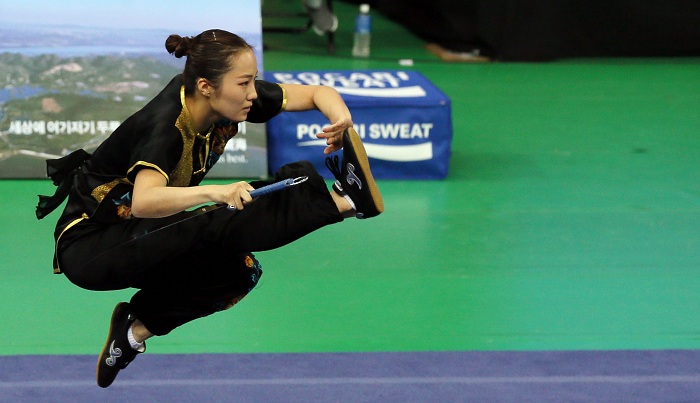
Wushu is a sport derived from traditional Chinese martial arts. There are two types of events in the game: taolu, the exhibition sport, and sanda, the full-contact sparring. Talou involves one athlete performing martial art movements and steps for which judges award points. Sanda, on the other hand, has many aspects of combat, allowing athletes to use their hands and feet to attack their opponent. It looks like kickboxing, to some extent, but with more grappling.
Taolu athletes wear a traditional Chinese-style uniform, regardless of one's nationality, while sanda athletes wear headgear, protective gear and shorts.
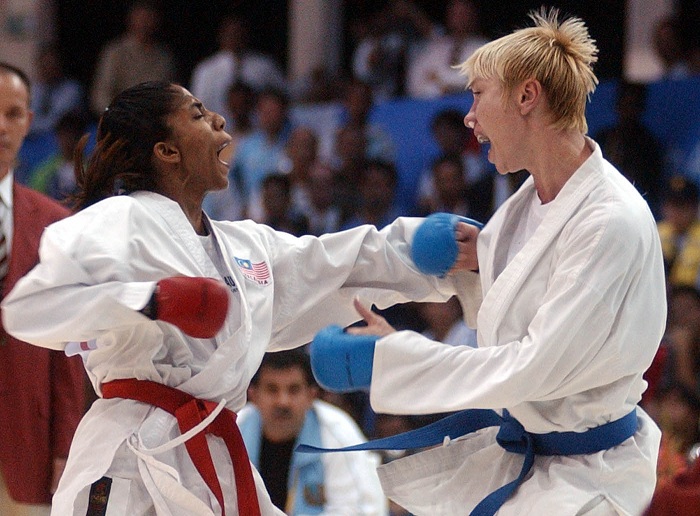
Karate is a martial art developed in Japan. It can roughly be divided into kata, a formalized sequence of movements, and kumite, an event practiced as a sport and as self-defense training. It looks similar to taekwondo, in that players wear white uniforms and use their hands and feet to strike each other. Taekwondo emphasizes more leg and lower body strikes, while karate puts more of an emphasis on the hands and arms.
Karate is considered as a striking art that uses more hand movements, such as the "knife hand," "spear hand" and "palm heel" strikes. More importantly, athletes should not actually touch their opponent. They must stop their strike about five centimeters away from the target in order to receive the point. If a player actually touched the competitor, the opponent gets a point. It's amazing to see the self-discipline of the athletes, who keep themselves from going that extra distance to actually strike their opponent. Iran and Japan have both been successful in this sport.
By Lee Seung-ah
Korea.net Staff Writer
slee27@korea.kr
Among them are sepaktakraw, a type of kick volleyball that was developed and is dominated by Malaysia and Thailand. There is also kabaddi, a South Asian mix of tag, dodgeball and Greco-Roman wrestling, and then wushu and karate, two martial arts from China and Japan, respectively.
Those four sports are gaining much attention from the mass media covering the games, as they are considered to reflect the traditions and culture of the originating countries.
Recently, the New York Times reported on sepaktakraw and kabaddi, describing them as "topsy turvy sports" that are played during the Asian Games.

Korea and Japan compete in a preliminary match of the sepaktakraw women's doubles competition at the Bucheon Gymnasium on September 20. (photo: Jeon Han)
The word for sepaktakraw is a combination of "sepak," a Malaysian word for kick, and "takraw," a Thai word for ball. Therefore, the sport literally means to, "kick the ball." As the name suggests, Malaysia and Thailand are the two biggest rivals in the sport. The basic rules are that players kick a ball onto the opposing side of the net, without letting it touch the ground. Watching the players constantly leap as high as their own height and then perform an overhead kick or a powerful spike with their foot is a jaw-dropping experience.

Kabaddi originates in northern India. Holding your breath is an essential skill in this game. (photo: Yonhap News)
Kabaddi comes from a folk tradition in northern India. The name came from a Hindi word for "holding your breath." In a rectangular court, seven athletes play on each team for 40 minutes for the men and 30 minutes for the women. At first glance, it looks similar to a martial art, or to playing tag. The rules of the game are that an attacker will cross over onto the opponent's side of the court, touch a defender, and then return to their side, scoring one point. A defender who distracts the attacker from going back to their side of the court will also get one point. If attacked, the defender must leave the court.
Players must hold their breath during the attack, while on the other team's side of the court. They must keep calling out, "Kabaddi," so as to prove that they are not breathing. The attacker will be kicked out of the game if caught breathing.
Therefore, breath control is the most important and essential skill in the game. Some top players are capable of yelling out, "Kabaddi," for a number of minutes. The game has increasingly been popular among South Asian and Middle Eastern countries, such as India, Pakistan and Iran, in particular, and a professional league was created earlier this year in India.

Korean athlete Lim Sungeun performs in the wushu women's nandao, or, "southern knife," competition at the 2014 Incheon Asian Games. (photo: Yonhap News)
Wushu is a sport derived from traditional Chinese martial arts. There are two types of events in the game: taolu, the exhibition sport, and sanda, the full-contact sparring. Talou involves one athlete performing martial art movements and steps for which judges award points. Sanda, on the other hand, has many aspects of combat, allowing athletes to use their hands and feet to attack their opponent. It looks like kickboxing, to some extent, but with more grappling.
Taolu athletes wear a traditional Chinese-style uniform, regardless of one's nationality, while sanda athletes wear headgear, protective gear and shorts.

Karate athletes make use of their hands to attack and to block. (photo: Yonhap News)
Karate is a martial art developed in Japan. It can roughly be divided into kata, a formalized sequence of movements, and kumite, an event practiced as a sport and as self-defense training. It looks similar to taekwondo, in that players wear white uniforms and use their hands and feet to strike each other. Taekwondo emphasizes more leg and lower body strikes, while karate puts more of an emphasis on the hands and arms.
Karate is considered as a striking art that uses more hand movements, such as the "knife hand," "spear hand" and "palm heel" strikes. More importantly, athletes should not actually touch their opponent. They must stop their strike about five centimeters away from the target in order to receive the point. If a player actually touched the competitor, the opponent gets a point. It's amazing to see the self-discipline of the athletes, who keep themselves from going that extra distance to actually strike their opponent. Iran and Japan have both been successful in this sport.
By Lee Seung-ah
Korea.net Staff Writer
slee27@korea.kr
Related Contents
Most popular
- First hearing-impaired K-pop act hopes for 'barrier-free world'
- 'Mad Max' director impressed by 'cinema-literate' Korean viewers
- Romanian presidential couple visits national cemetery
- President Yoon, Japan PM pledge better trilateral ties with US
- President, Romania pledge better defense, nuclear power ties




